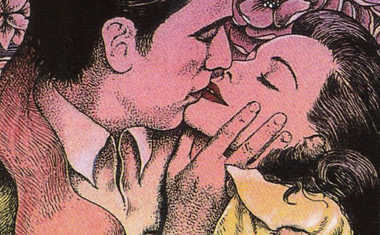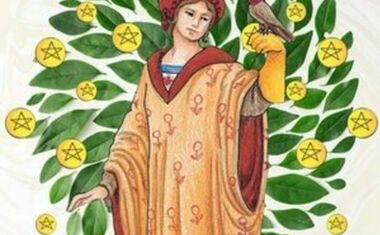
Confraternities
Cracking the code of ancient lay people
Part VII: Confraternities
Originally, "confraternitas" referred to groups of lay persons and secular clergy affiliated with a monastery (Little, 1988). They provided an opportunity for a deeper spiritual experience while remaining in the secular world. Before the end of the 13th century, the zeal of the Mendicant Orders (Franciscans and Dominicans) turned them into a popular form of lay piety (Banker, 1988).
The friars saw the confraternities as a logical extension of the Franciscan Tertiaries (Henderson, 1990). The confraternities provided an outlet for individual spirituality and penitential asceticism outside the control of a corrupt clergy (Henderson, 1994). This spontaneous need had spawned heresy throughout the centuries and culminated in the tragedy of the Cathari. The confraternity was encouraged as an orthodox institution that could minister to this legitimate instinct for self-development (Lambert, 1998).
The organizations were set up as independent religious fraternities (Terpstra, 1995). They administered community charity (Pullen, 1971), commissioned art (Schiferl, 1991), organized processions and religious dramas on Holy Days (Wisch and Ahl, 2000), and cared for abandoned children (Terpstra, 2000a). But beyond the charitable and ritual activities, they also supported a contemplative, individualistic spirituality for their members (Henderson, 1990).
The friars' perception of the demand for individual spirituality proved accurate beyond their wildest imaginings. Florence had fifty-two confraternities by 1400 and 156 by the end of the century (Eisenbichler, 1991). Some confraternities had over six hundred members (Banker, 1988). The number and influence of confraternities continued to grow into the 16th century (Black, 1989). By the middle of the sixteenth century there were 126 confraternities in Venice (Trexler, 1980). Between 1247 and 1763, a total of 377 confraternities were founded in Venice (Mackenney, 2000). Some of the confraternities still exist today, for example, running the ambulance service in Florence (Capponi, 1990). The movement grew beyond any possibility of ecclesiastical control, and they jealously guarded their independence and freedom from control by the clergy (Flynn, 1989).
The friars explicitly set up the confraternities as a substitute for Catharism (McGinn, 1979). One of the most famous organizers was the Dominican Peter of Verona, himself a convert from the Catharism of his parents (Little, 1988). We have suggested in earlier chapters that the confraternities transmitted the transformed doctrine and practice of Catharism into 15th century Italy where the Tarot first appears. Yet, on the surface, they appear to glitter in their pristine orthodoxy!
Each confraternity, for example, had to draw up a "constitution" that was approved by the local ecclesiastical authorities. In some cases, their statutes explicitly state that the extirpation of heretics was a primary objective (MacKenney, 2000), but the ordinances were carefully designed to meet the approval of the church and "may not necessarily reflect the true, or at least the full, intentions and objectives of members." (Flynn, 1989). And therefore, "it is not always helpful to see the written document as driving the activity it records" (Mackenney, 2000).
The confraternities eventually absorbed the remnants of Catharism. But there are numerous hints that they also served as a place of refuge (Lambert, 1998). Their sympathies are revealed, for example, in the case of Domenico di Pietro Rosse, a Franciscan tertiary, who combined his duties in a Catholic confraternity with an active life as a Cathar believer (Lambert, 1998). One of their charitable institutions was the "ospedale," a hospice available to pilgrims and itinerant preachers (Esposito, 2000). It is unlikely that itinerant Perfecti were turned away. Houses were maintained in the larger Italian cities for newly converted Jews and Muslims (Lazar, 2000) which seems to reflect a continuation of the openness of early Cathar Provence. The Dukes of the house of Este in Ferrara (where the Tarot first appears in 1442) had long risked papal disfavor by providing housing for refugee Jews (Horowitz, 2000). There are also minor hints such as confraternity orphanages that maintained themselves by doing piece work in the textile trade, the traditional trade of the Cathari (Terpstra, 2000a).
We pointed out in an earlier chapter that the deathbed administration of the Consolamentum was the keystone of Cathar practice. It is very suspicious therefore, to find that care of the dying was a crucial element in the Confraternities as well (Tetel et al., 1989). Confraternity members would, for example, spend the last night with condemned criminals, walking with them to the execution (Banker, 1988). Care of the dying and burial of the death was a function reserved to the Confraternities in most Italian cities (Terpstra, 1991).
There is also the strange phenomenon of the Flagellants. Based on their interpretation of Joachim, the Spiritual Franciscans had calculated 1260 as the year marking the transition to the Age of the Spirit (Barr, 1988). A number of groups prepared for the event with an asceticism reminiscent of Cathar dualism. Although nothing much happened that year, the asceticism emerged as ritual self-flagellation that was institutionalized in a number of confraternities (Leff, 1967). The flagellant confraternities remained on the heterodox fringe (Torre, 2000) and may represent an aberrant relic of Cathar rejection of the evil body.
These clues indicate that some of the confraternities, at least, preserved a sympathy for Cathar practices even while they replaced it as a social institution. Suspicions of heterodoxy were often raised because of the absolute secrecy of confraternity activities and membership (Barr, 1988). Originally intended to protect anonymity during their charitable activities, the secrecy made rulers nervous as the confraternities acquired political influence and power (MacKenney, 2000). The Church remained suspicious of any individualistic spirituality outside of ecclesiastical control (Flynn, 1989). In 15th century Florence, the confraternities were closed on a number of occasions because of these suspicions (Eisenbichler, 1998).
Perhaps the most intriguing speculation is that the Confraternity was the institution that actually produced the first Tarot! The circumstantial evidence is considerable. The confraternity was a powerful, heterodox force in the right place and the right time as the Tarot first appears. As refuge and replacement for Catharism, the confraternity inherited much from the Provencal synthesis of earlier centuries. The influence of the Franciscans provided Joachism and the Neoplatonism that transformed the Cathar dualism. The Joachimism is evident in the heterodox flagellant confraternities. The Neoplatonism is evident when one discovers that the confraternities provided the model for the Florentine Academy founded by Alamanno Rinuccini (Weissman, 1990) which, in turn, became Ficino's Platonic Academy (Kristeller, 1956)!
As secret organizations motivated by individualistic spirituality, the Confraternity provided a forum for the exploration of esoteric mysticism within an orthodox Catholic culture. As a result, they attracted humanists (Weissman, 1990) and the intellectual elite (Eisenbichler, 1998). These intellectuals would have added the astrology, neo-Pythagorean numerology, art of memory, and the other esoteric disciplines which seem to be represented in the Tarot (O'Neill, 1986). Since the confraternities were in charge of Holy Day processions and pageants (Henderson, 1994), they are the logical source for the processional elements from Petrarch's "I Trionfi" that are evident in the Tarot (Moakley, 1966) and possibly the source for their original name, trionfi (Ferrara, 1442; Dummett, 1980).
But the creation of the Tarot required more than intellectual syncretism. It also required artists and printers and the confraternity was the only institution in the Italian city-states that brought together members of different social classes (Esposito, 2000). Nobility, intellectuals, and artisans were brought together weekly in the secrecy of the confraternity (Banker, 1988; Terpstra, 2000b). As social and political institutions, they cared about the welfare of their neighbors. As esoteric religious institutions, they were concerned about the education and edification of their neighbors. Therefore, we shouldn't be surprised to learn that they produced "woodblock devotional images" (Zardin, 2000) for distribution. Since the printers were already producing woodblock decks of playing cards, the production of the first Tarot seems a very small step indeed!
And, as if that bold speculation were not enough, recent scholarship tends to see the confraternities as the progenitors of the Rosicrucian secret lodges and even Freemasonry (Terpstra, 2000b). The confraternities established a tradition which Terpstra (2000b) characterizes as "Ritual Kinship". All of the critical elements are there: oaths of secrecy (Black, 2000), secret rituals complete with special robes (Rondeau, 2000), and initiation ceremonies of quasi-sacramental significance (Polizzotto, 2000).
Some of the confraternities were explicitly designed to provide devotional and social services for trade guilds (Henderson, 1990). The guild was an important organizational unit of urban life and probably had strong religious and charitable aspects by later Medieval times (Black, 2000). The confraternities may provide a critical link between the Medieval guilds of "operational" Masons and the later "speculative" Masonry that has not received sufficient attention from masonic historians. Both the confraternity and Freemasonry are fraternal organizations, outwardly seen as charitable institutions, with secret initiations and ceremonies, monotheistic, encouraging morality, and mutual aid. Both were catalysts for political dissent. Both channeled a traditional esoteric concept of personal spirituality and mysticism.
Reading descriptions of 16th and 17th century confraternities (e.g., Bernardi, 2000), it is hard to ignore the resemblance to Freemasonry. With the coming of the Enlightenment, religious values changed and so did the confraternities. "Ironically, this rejection of Ancient Regime confraternities was not a rejection of traditional confraternitas, or ritual kinship itself. That powerful urge found secularized civic-religious expression in the propagandist evocations of revolutionary brotherhoods, in the mutual aid of fraternal lodges, and in the arcane secretive rituals of the Freemasons" (Terpstra, 2000b).
The Italian Confraternities seem reasonable candidates for the point of origin of Tarot. They preserved and transformed the earlier esoteric synthesis achieved in Provence. They provided an intellectual forum within which additional esoteric elements were added to the synthesis. They explain how esoteric concepts became integrated into a restrictive Catholic culture. Once integrated, they formed a social entity that preserved the synthesis and may have transmitted it to the later Rosicrucians, Freemasons, and Occultists.
References
Banker, J. R. 1988. Death in the Community. University of Georgia Press, Athens, GA.
Barr, C. 1988. The Monophonic Lauda and the Lay Religious Confraternities of Tuscany and Umbria in the Late Middle Ages. Western Michigan University Press.
Bernardi, C. 2000. "Corpus Domini: Ritual Metamorphosis and Social Change in Sixteenth and Seventeenth-century Genoa." 228-242. N. Terpstra, ed. The Politics of Ritual Kinship; Confraternities and Social Order in Early Modern Italy. Cambridge Univ Press, Cambridge.
Black, C. F. 1989. Italian Confraternities in the Sixteenth Century. Cambridge University Press, Cambridge.
Black, C. F. 2000. "The Development of Confraternity Studies over the Past Thirty Years. 9-29. N. Terpstra, ed. The Politics of Ritual Kinship; Confraternities and Social Order in Early Modern Italy. Cambridge Univ Press, Cambridge.
Capponi, N. 1990. "The Florentine Confraternities Today." 328-335. T. Verdon and J. Henderson, eds. Christianity and the Renaissance: Image and Religious Imagination in the Qauattocento. Syracuse University Press.
Dummett, M. 1980. The Game of Tarot. Duckworth, London.
Eisenbichler, K. ed. 1991. Crossing the Boundaries. Medieval Institute Publications, Western Michigan University. Kalamazoo.
Eisenbichler, K. 1998. The Boys of the Archangel Raphael: A Youth Confraternity in Florence, 1411-1785. University of Toronto Press.
Esposito, A. 2000. "Men and Women in Roman Confraternities in the Fifteenth and Sixteenth Century." 82-97. N. Terpstra, ed. 2000 The Politics of Ritual Kinship: Confraternities and Social Order in Early Modern Italy. Cambridge Univ Press, Cambridge.
Flynn, M. 1989. Sacred Charity: Confraternities and Social Welfare in Spain, 1400-1700. Cornell University Press, Ithaca, NY.
Henderson, J. 1990. "Penitence and the Laity in Fifteenth-Century Florence." 229-249. T. Verdon and J. Henderson, eds. Christianity and the Renaissance: Image and Religious Imagination in the Quattrocento. Syracuse University Press, Syracuse, NY.
Henderson, J. 1994. Piety and Charity in late Medieval Florence. Oxford University Press, Oxford.
Horowitz, E. 2000. "Jewish Confraternal Piety in Sixteenth-century Ferrara." 150-171. N. Terpstra, ed. The Politics of Ritual Kinship: Confraternities and Social Order in Early Modern Italy. Cambridge Univ Press, Cambridge.
Kristeller, O. 1956. "Lay Religious Traditions and Florentine Platonism." Studies in Renaissance Thought and Letters. Editioni di Storia e Litteratura, Rome.
Lambert, M. 1998. The Cathars. Blackwell Publishers, Oxford.
Lazar, L. 2000. "The First Jesuit Confraternitites and Marginalized Groups in Sixteenth-century Rome." 132-149. N. Terpstra, ed. The Politics of Ritual Kinship: Confraternities and Social Order in Early Modern Italy. Cambridge Univ Press, Cambridge.
Leff, G. 1967. Heresy in the Later Middle Ages: The Relation of Heterodoxy to Dissent, c. 1250-1450. Manchester Univ Press, Manchester.
Little, L. K. 1988. Liberty, Charity, Fraternity: Lay Religious Confraternities at Bergamo in the Age of the Commune. Smith College, Northampton, Massachusetts.
McGinn, B. 1979. Apocalyptic Spirituality. Paulist Press, Mahwah, NJ.
Mackenney, R. 2000. "The Scuole Piccole of Venice." 172-189. N. Terpstra, ed. The Politics of Ritual Kinship: Confraternities and Social Order in Early Modern Italy. Cambridge Univ Press, Cambridge.
Moakley, G. 1966. The Tarot Cards. New York Public Library, NY.
O'Neill, R. V. 1986. Tarot Symbolism. Fairway Press, Lima, OH.
Polizzotto, L. 2000. "The Medici and the Youth Confraternity of the Purification of the Virgin, 1434-1506." 98-113. N. Terpstra, ed. The Politics of Ritual Kinship: Confraternities and Social Order in Early Modern Italy. Cambridge Univ Press, Cambridge.
Pullen, R. S. 1971. Rich and Poor in Renaissance Venice. Harvard University Press, Cambridge, MA.
Rondeau, J. 2000. "Homosociality and Civic (Dis)Order in Late Medieval Italian Confraternities." 30-47. N. Terpstra, ed. The Politics of Ritual Kinship: Confraternities and Social Order in Early Modern Italy. Cambridge Univ Press, Cambridge.
Schiferl, E. 1991. "Italian Confraternity Art Contracts: Group Consciousness and Corporate Patronage, 1400-1525." 121-140. Eisenbichler, K., ed. 1991. Crossing the Boundaries. Medieval Institute Publications, Western Michigan University. Kalamazoo.
Terpstra, N. 1991. "Death and Dying in Renaissance Confraternities." 179-200. Eisenbichler, K., ed. 1991. Crossing the Boundaries. Medieval Institute Publications, Western Michigan University. Kalamazoo.
Terpstra, N. 1995. Lay Confraternities and Civic Religion in Renaissance Bologna. Cambridge Univ Press.
Terpstra, N. 2000a. "In Loco Parentis: Confraternities and Abandoned Children in Florence and Bologna." 114-131. N. Terpstra. 2000. The Politics of Ritual Kinship: Confraternities and Social Order in Early Modern Italy. Cambridge Univ Press, Cambridge.
Terpstra, N. 2000b "The Politics of Ritual Kinship." 1-8. N. Terpstra, ed. The Politics of Ritual Kinship: Confraternities and Social Order in Early Modern Italy. Cambridge Univ Press, Cambridge.
Tetel, M., R. G. and Witt, R. Goffen. 1989. Life and Death in Fifteenth-century Florence. Duke University Press.
Torre, A. 2000. "Faith's Boundaries: Ritual and Territory in Rural Piedmont in the Early Modern Period." 243-261. N. Terpstra, ed. The Politics of Ritual Kinship: Confraternities and Social Order in Early Modern Italy. Cambridge Univ Press, Cambridge.
Trexler, R. C. 1980. Public Life in Renaissance Florence. Academic Press, NY.
Weissman, R. 1990. "Sacred Eloquence: Humanist Preaching and Lay Piety in Renaissance Florence." 250-271. T. Verdon and J. Henderson, eds. Christianity and the Renaissance: Image and Religious Imagination in the Qauattocento. Syracuse University Press.
Wisch, B. and D. C. Ahl. 2000. Confraternities and the Visual Arts in Renaissance Italy. Cambridge University Press, NY.
Zardin, D. 2000. "Relaunching Confraternities in the Tridentine Era: Shaping Consciences and Christianizing Society in Milan and Lombardy." 190-209. N. Terpstra, ed. The Politics of Ritual Kinship: Confraternities and Social Order in Early Modern Italy. Cambridge Univ Press, Cambridge.



